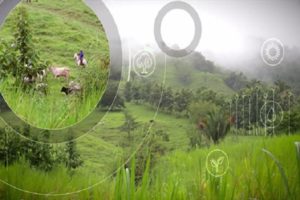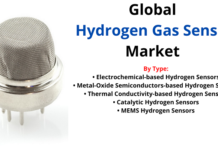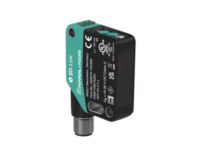
ON Semiconductor’s moisture sensing family of Battery-Free Wireless Sensors are UHF RFID wireless sensors that allow the passive sensing of moisture in a variety of applications where size and accessibility is at a premium. Originally released to detect water leaks during vehicle production, the small footprint of these wireless sensors allows them to be used in a variety of different IoT applications and across industries, one example would the future of agriculture and smart farming.
With the help of a drone, the moisture level detection sensor tag that is specifically designed for passive sensing of moisture on various surfaces and finished goods can be attached and wirelessly detect crop moisture. In the application the sensor tag has the ability to measure soil moisture underground to optimize irrigation techniques and minimize overwatering costs.
The tag digitizes sensed moisture detection/level information which can be read by a standard UHF RFID Gen 2 compliant reader. This Battery-Free Wireless Sensor can greatly enhance the reliability of the end product and offers many benefits for deployment in industrial settings. Click here for more information on the SPS1M or our wireless sensors.
Watch a demonstration of the “Moisture Sensing for Smart Agriculture” application from ON Semiconductor below:
Full Transcript Available Below:
Hello, my name is Walker Mitchell and I am an Applications Engineer here at ON Semiconductor. Today I will be showing how our portfolio of battery-free, wireless, Smart Passive Sensors can be used in Digital Smart Farming applications where traditional sensors are not practical due to their wiring or battery requirements.
Our newest Smart Passive Sensor, or SPS tags separate the UHF antenna from the location of stimuli detection, enabling soil moisture measurements underground. Analyzing this soil moisture content across large areas of farmland will allow farmers to optimize irrigation techniques and minimize the overwatering costs.
In order to collect the data from all of the smart passive sensors placed throughout the farm, a mobile UHF reader is required. Attaching the reader to a drone is a natural fit due to the increasing use of drones in agriculture for imaging and spraying. The mobile UHF reader can then be programmed with a flight path to read the sensors of interest throughout the entire farm.
Once the data is collected by the drone it can be synthesized to determine which portion of the crops are receiving optimal moisture levels and to adjust watering schedules and locations accordingly.
For information visit: On Semiconductor



















